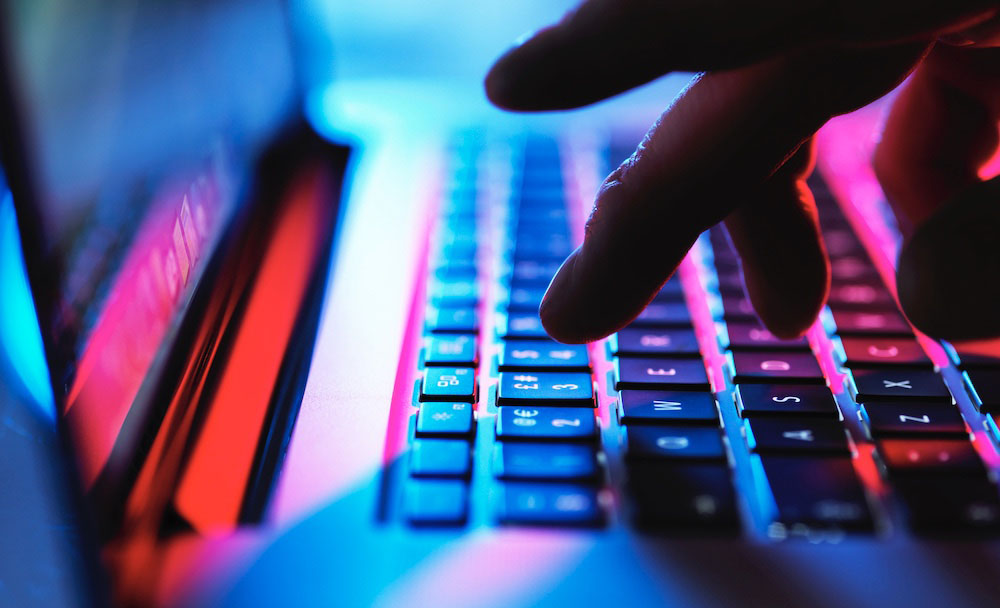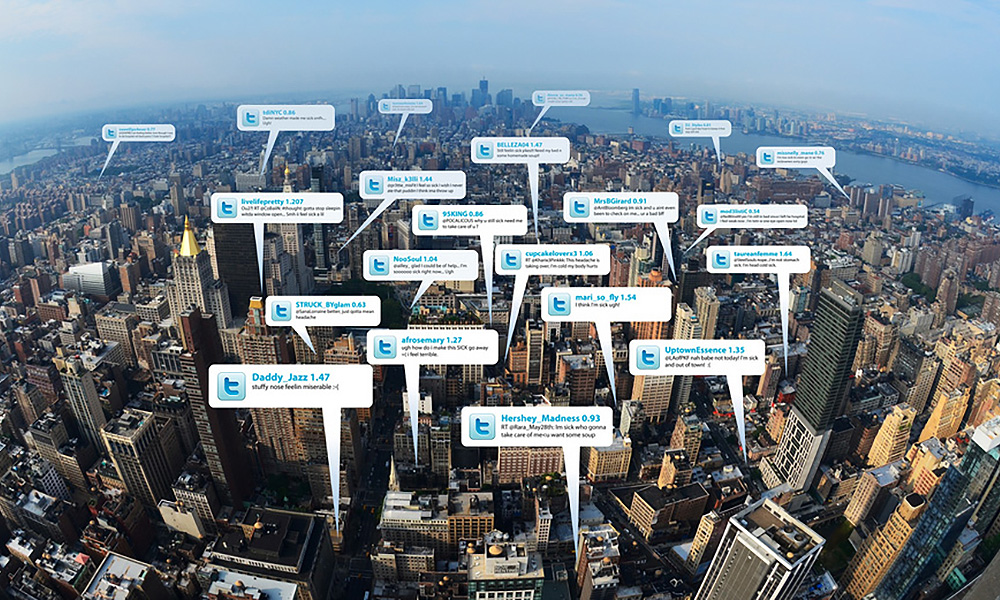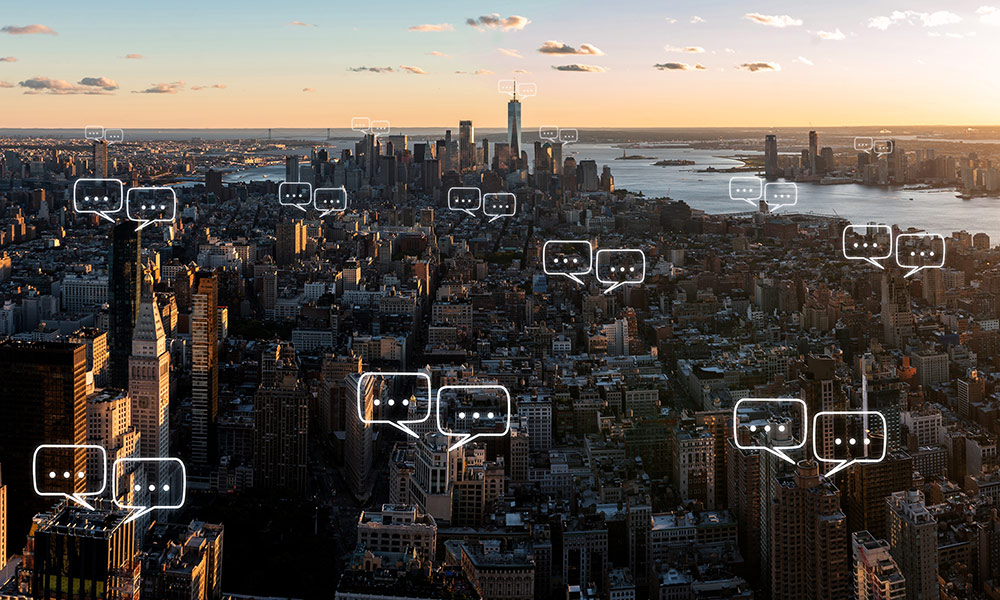Themes of anxiety, depression, and fear of shortages emerge as Rochester researchers continue to mine social media as a reflection of the United States “in the moment.”
As the coronavirus pandemic began to disrupt life in the US, feelings of depression increased across the country—though much less so in Florida.
Younger adults aged 18 to 35, females, and consumers in coastal states were more likely to ask people to stop hoarding.
And college students, overwhelmingly, were not happy about having to learn remotely.
Such snapshots of public attitudes during the opening phases of the COVID-19 pandemic were “mined” from Twitter messages by the University of Rochester computer science research group of Jiebo Luo. After an initial study on the use and implications of controversial terms like “Chinese virus” and “Wuhan virus,” which was published by the IEEE Transactions on Big Data and featured by IEEE Spectrum, the flagship magazine and website of the IEEE, the group also:
- compared how college students responded differently from the general public to the pandemic
- monitored increasing feelings of depression as COVID-19 spread
- studied consumer hoarding behaviors resulting from the pandemic
Their findings were shared recently in a lightning presentation for chairs of computer science PhD-granting departments and heads of major industrial research labs at the Computing Research Association (CRA) Virtual Conference in July.
“We hope these studies can raise awareness among researchers and the general public of how COVID-19 is influencing public opinion and impacting peoples’ mental health,” says Luo, a professor of computer science. Nine current and former Rochester computer and data science students are among the coauthors of the studies.
During the past decade, people have increasingly relied on Twitter and other social media platforms to express their feelings. This has provided researchers with a wealth of “in the moment” information to detect shifts in public opinion on key social and political issues, to track the spread of disease, even to identify restaurants that might be sources of food poisoning.
Twitter, in particular, is a rich source of data because the millions of tweets posted by its members each day are easily accessible using an application programming interface.
However, Twitter also poses challenges to researchers because it strictly limits the number of words per tweet. Luo’s group describes how it has capitalized on recent advances in machine learning and data mining to overcome these challenges. The group created a process that “combines deep learning model scores with psychological textual features and users’ demographic information” to detect signs of depression among Twitter users.
Here’s a closer look at the group’s recent findings about COVID-19 and Twitter:
Hoarding behavior
This is an example of how social media can be a “double-edge sword,” the researchers report. “While it is a rich source for obtaining useful information concerning the pandemic, it also shapes the fears. For instance, when posts of panic-buying of toilet paper and hand sanitizers proliferate on social media platforms, people might make panic purchases after they see such posts.”
The researchers analyzed the hoarding patterns of 43,102 Twitter users and found “significantly higher” anxiety associated with hoarding-related tweets. Concerns spiked in early March on the availability of toilet paper and in early March and end of March for medicines, then declined for both categories; concerns about the availability of food continued to rise through the end of April. The highest proportion of Twitter users engaged in hoarding were in urban areas.
College students
From a pool of Twitter users who follow official Twitter accounts of the 200 top-ranked US universities, the researchers obtained 73,787 COVID-19 tweets from 12,776 users, 3,460 of whom were college students.
The students tended to be more preoccupied with COVID-19 issues that affected them personally—for example, school closures—and news from areas close to their homes. They tended to respond even more negatively than the general public to the spread of the pandemic and frequently expressed negative feelings about how social distancing and school closures were affecting their work and study environments. About 81.3 percent expressed dislike for remote learning. Many blamed East Asians for the disruptions in their lives.
Depression levels
The researchers created a dataset of 5,150 Twitter users, half of whom were identified as suffering from depression based on prepandemic tweets, the other half serving as a control group. “This is by far the largest English Twitter depression dataset,” the researchers say.
Depression levels are plotted for both groups starting with reports of the first confirmed US case on January 21, the declaration of a national emergency on March 13, and South Carolina’s stay-at-home order on April 7. Interestingly, feelings of depression increased in the control group, but decreased among depression sufferers after the report of the first US case. The depression levels of both groups increased after the national emergency was announced.
The researchers also looked at trends in three states: Florida, California, and New York. Twitter users in Florida were the most likely to talk about lifestyle changes caused by the pandemic, while New Yorkers were the most likely to talk about the impact on hospitals—no doubt reflecting the high number of cases in that state. Twitter users in California and Florida were more likely to comment on government policies on COVID-19. Florida’s lower overall depression rates than the two other states and the US in general— both before and after the virus outbreak—may be due to “a lower depression rate overall . . . irrespective of the pandemic,” the researchers report.
Now, COVID-19 is surging in Florida and other states that were still relatively unaffected when the studies were conducted. Mask wearing has become even more politicized, and educators at all levels are debating how best to resume classes this fall. And the outcome of this fall’s presidential election may hinge on still unforeseen twists and turns of COVID-19.
Luo says his team will continue to mine Twitter to help researchers and the public better understand the social impacts of this deadly and rapidly evolving pandemic.
Read more
 Can Twitter anticipate attacks against Asians and Asian Americans?
Can Twitter anticipate attacks against Asians and Asian Americans?University of Rochester computer scientists are gleaning a wealth of information from Twitter users to document the social impacts of the novel coronavirus pandemic.

Hajim School faculty members honored by ACM, IEEE
Faculty members of Rochester’s Hajim School of Engineering & Applied Sciences were recognized by the Association for Computer Machinery and the Institute of Electrical and Electronics Engineers.

Millions of tweets are a gold mine for data mining
Rochester computer scientists are mining the data in social media to identify trends in health, consumer relations, marketing, politics, and other fields.




